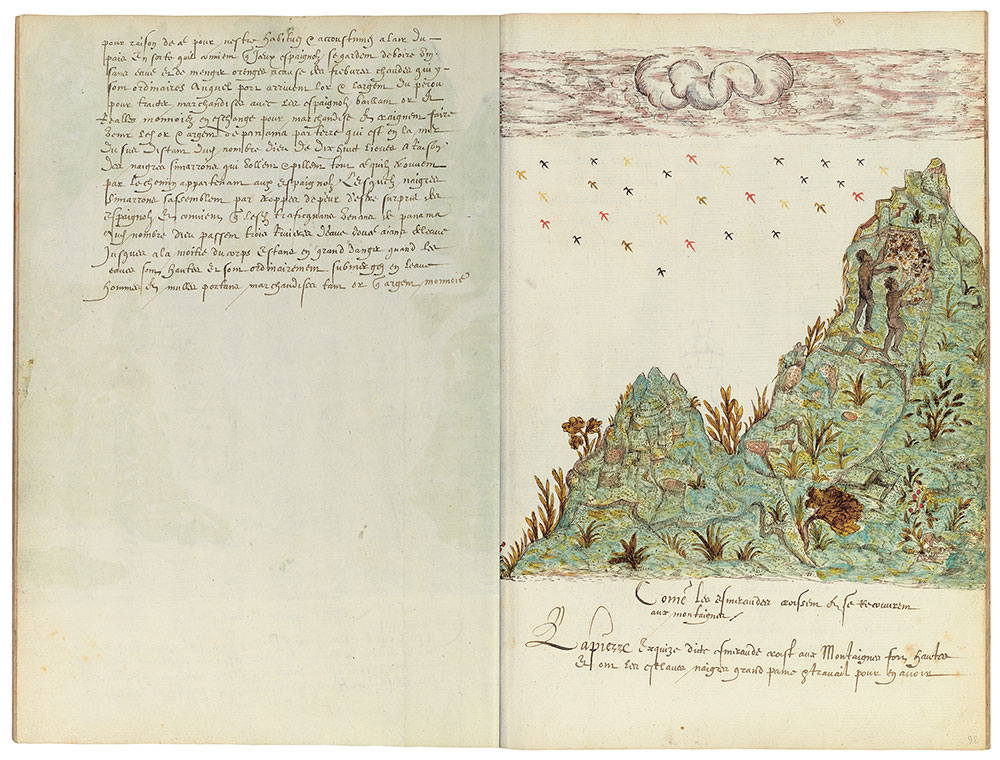
Histoire Naturelle des Indes
Illustrated manuscript
Bequest of Clara S. Peck, 1983
In 1983, The Morgan Library & Museum received, as the bequest of Clara S. Peck, an extraordinary volume whose beautiful paintings and descriptions document the plant, animal, and human life of the Caribbean late in the sixteenth century. Spaniards had already begun to exert influence over the indigenous people of the area when explorers from England and France arrived, among them Sir Francis Drake. The volume, known as the Drake Manuscript and titled Histoire Naturelle des Indes when it was bound in the eighteenth century, gives us a wonderful picture of daily life at the time of Drake's many visits to the region. Although Drake's connection to the manuscript is uncertain, he is mentioned on more than one occasion by the authors. Drake himself is known to have painted, but none of his work survives.
Contents: 199 images of West Indian plants, animals and human life, with accompanying manuscript captions written in late sixteenth-century French.
Medium: Most of the illustrations consist of a black chalk underdrawing and a combination of pen and brown ink with watercolor; on some images selected areas have also been glazed with a gum.
Binding: Bound or rebound in brown leather in the late 18th century.
Pagination: Penciled folio numbers (1–125) in lower right corner of each page were added by The Morgan Library & Museum. Folios 92v–93, 93v–94, and 95v–96 are fold-out leaves.
Continued from fol. 97
For this reason, because they are not used and accustomed to the air of the country, it is advisable that these Spaniards abstain from wine without water and from eating oranges on account of the high fevers which are common there. In this port arrive gold and silver from Peru to be traded for merchandise with the Spaniards, gold and Reales being given in exchange for merchandise. They are afraid to have the gold and silver transported by land from Panama which is located in the Southern Sea and eighteen leagues from Nombre de Dios because of the runaway negro slaves who steal and plunder everything they find on the road belonging to the Spaniards. These runaway negroes form bands for fear to be surprised by the Spaniards. It is necessary that the traders coming from Panama to Nombre de Dios pass three fresh water rivers, the water covering half their bodies and they are in danger when the water is high. Men and mules carrying merchandise as well as gold and silver coins are usually submerged in the water.
Come Les Esmeraudes Croissent Et Se Recouurent Aux Montaignes (How Emeralds Grow and are Mined in the Mountains)
The precious stone called emerald grows on the very high mountains and the negro slaves have great trouble and difficulty obtaining it
